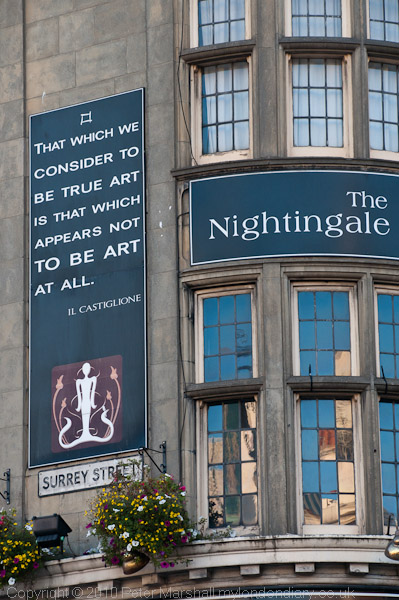Although I wasn’t able to see the show ‘Degeneration‘ by the collective Human Endeavour which is upstairs at the Bellis Gallery, 8-9 Kings Road, South Lanes, Brighton until Friday 14th Nov (Wed-Sat 10-30-18.30, Sun 11.30-16.30) I did meet briefly with one of the photographers, Alex Currie, who has kindly sent me four of his images:

Edinburgh, Alex Currie

Glasgow, Alex Currie

Salford Garages, Alex Currie

Salford, Alex Currie
These are pictures taken with great deal of respect for the subject and with care using the movements of a 4×5″ camera. Together with the other work I’ve seen on this project they well reflect the objective of the project, stated to be
to take a critical look at the state of housing and regeneration in the 21st century, and the implications and complex nuances this may have on some of the poorest in society,reliant upon social housing.
As they make clear, much of what they are recording has not occurred by chance and cannot be blamed on the architects and builders, but is the result of deliberate policies.
After several decades of neglect, consecutive governments have overseen the gradual disappearance of social housing, due to Right To Buy and a lack of new housing stock built, arguably fuelling the necessity to own rather than let that has instigated the artificial inflation of the housing market. This opens up many questions as to why this was allowed to happen, has fuelled the rise in homelessness and poverty and left the majority of people living in social housing trapped in so called ‘sink estates’.
There are indeed examples where blocks similar to many of those shown in this project have been sold to private companies and refurbished to become luxury flats. But for councils and social housing associations the alternative of demolition (sometimes also creating a little local spectacle through the use of explosives) attracts, perhaps because of the financial incentives available, or simply because over the past 40 or 50 years we have become increasingly a throwaway society. Or perhaps sometimes because of the profits that others can make.
The house I live in was built around 1880, condemned in the 1950s and still (with minor alterations and occasional maintenance) performing its original function reasonably adequately. It wasn’t well built, didn’t use the best of materials, but the design was basically sound. The prefabs I photographed a few days ago, made in 1945 were only meant to last 5-10 years, but some are still in reasonable condition, and their owners and tenants happy to remain living in them. So it is a very good question why so much of the building around the 1960s are now considered only fit for demolition (although some of those I knew erected in Hulme in the mid 60s were in a terrible state within months of completion.)
The answers lie not among the planners and the architects but in the politics of the era (and perhaps things have not changed much.) I’m currently reading a book by a friend of mine, Franklin Medhurst, ‘A Quiet Catastrophe: The Teeside Job‘ (ISBN: 978-0-9566550-0-40 in which he tells the story behind his dismisal as Director of the Teeside Survey and Plan in 1967, largely because of his insistence that pollution be taken into account in the location of housing in the plan. The two men who fired him were Hugh Wilson, responsible for Cumbernauld, recently voted by its residents the “second crappiest town in Britain” and Lewis Womersley, responsible for the Park Hill terraces in Sheffield that feature on Currie’s site as the first picture in his project, Redundant Ideals. Its also worth looking at the other two projects on his site, which include one ‘Nonscape‘ which turns out to be black and white images of central Croydon.
This is a very different view of the place than on my own website where I have a set taken a few years earlier in 1991 along the then recently opened tram line. Looking at the two I think his work looks to be older, and not just because it was taken in black and white rather than in colour. Unusually my Croydon Tramlink was taken on medium format (and I also took some panoramas that have have yet, 9 years later, to be added to the site) but after that I reverted to using 35mm with a shift lens.
Finally, one thought that I left Brighton with, from the theatre opposite the station:
